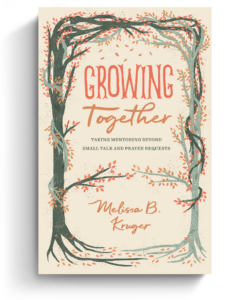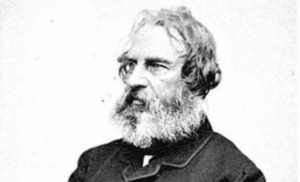President Biden recently announced he would be issuing a pardon for people convicted of simple marijuana possession. He also urged all governors to do the same for state offenses. The president also made a third point, though, that’s received less attention: he’s asking the secretary of health and human services and the attorney general to initiate the administrative process to “review expeditiously how marijuana is scheduled under federal law.”
Federal law currently classifies marijuana in Schedule I of the Controlled Substances Act, the classification, says the president, “meant for the most dangerous substances.” “This is the same schedule as for heroin and LSD,” said the president’s statement, “and even higher than the classification of fentanyl and methamphetamine—the drugs that are driving our overdose epidemic.”
The president implies that because marijuana isn’t causing overdose deaths as heroin or fentanyl are, the drug isn’t dangerous. He’s wrong.
Like many Americans, President Biden appears to have an outdated and erroneous view of the harms of marijuana. The belief that the drug is nonaddictive, relatively harmless, and no serious threat to individuals or society has been the rationale that’s led to the legalization of marijuana in over a dozen states. A Gallup poll taken last year found that two in three Americans now support legalization, including more than half of Americans who attend church weekly or monthly.
Dangers of Cannabis
Not everyone will be convinced—or even care—about the dangers. But to persuade the persuadable, here’s some of the evidence for why marijuana (cannabis) is a dangerous drug.
1. The THC content in cannabis is higher today than in previous decades.
The chemical responsible for most of marijuana’s psychological effects is tetrahydrocannabinol (THC). Many Christians from the baby boomer and Gen X generations support legalization because they think the cannabis used today is like what they or their friends experimented with from the 1960s to the 1990s—and similarly nonaddictive. But prior to the 1990s, the THC content in cannabis was less than 2 percent, notes addiction psychiatrist Elizabeth Stuyt. In the 1990s, it grew to 4 percent, and between 1995 and 2015 there has been a 212 percent increase in THC content in the marijuana flower. The increased potency makes them potentially more dangerous and more likely to result in addiction, says Stuyt.
“In the era of legalized weed, the drug you think of as ‘cannabis’ can hardly be called marijuana at all,” says Leighton Woodhouse. He points out,
The kinds of cannabis products that are sold online and at dispensaries contain no actual plant matter. They’re made by putting pulverized marijuana into a tube and running butane, propane, ethanol, or carbon dioxide through it, which separates the THC from the rest of the plant. The end product is a wax that can be 70% to 80% THC. That wax can then be put in a vacuum oven and further concentrated into oils that are as much as 95% or even 99% THC. Known as “dabs,” this is what people put in their vape pens, and in states like California and Colorado it’s totally legal and easily available to children. “There are no caps on potency,” said Stack.
2. Legalization leads to more teens and young adults becoming addicted.
Studies have found that 9 percent of those who experiment with marijuana will become addicted, 17 percent of those who start using marijuana as teenagers will become addicted, and 25–50 percent of those who use daily will become addicted. Research also estimates that approximately 3 in 10 people who use marijuana have marijuana use disorder.
This is especially true for teenagers and young adults. A survey of more than 500,000 people looked at the use of marijuana before and after widespread legalization in the U.S. The results show legalization led to an increase not only in the use of the drug but also in marijuana use disorder among those ages 12 to 26. The result was unsurprising for addiction researchers. As Stuyt notes,
The reasons why adolescents are at such great risk for developing an addiction to drugs or alcohol is because this is a period with increased neurobiological based tendencies for risk taking with decreased suppressive and regulatory control, and this is a period of decreased parental monitoring and increase in peer affiliations, a “perfect storm.”
A study in New Zealand found an average loss of eight IQ points with early persistent teen use of marijuana. “If you already have a high IQ, a drop in 8 points may mean the difference between making As and making Bs,” says Stuyt, “however for the person with an average IQ of 100 (50th percentile), a loss of 8 points can put that person in the 29th percentile with significant difficulty in functioning.”
The New Zealand study also found that even when teens stopped using cannabis it didn’t fully restore neuropsychological functioning. As the researchers note, this is “suggestive of a neurotoxic effect of cannabis on the adolescent brain and highlights the importance of prevention and policy efforts targeting adolescents.”
3. Cannabis can cause psychosis.
In 1936, a propaganda film called Reefer Madness portrayed a group of high school students suffering from hallucinations, violent behavior, and suicide after using marijuana. The film became a cult hit among those who believed cannabis was essentially harmless. But since then, the film has proven to have a much more realistic view of the effects of cannabis use than those who mocked it.
For instance, we now know that exposing the brain to THC greatly increases a person’s susceptibility to mental illness, such as schizophrenia. For example, studies have found that using cannabis prior to the age of 15–18 significantly increases the risk of developing psychotic symptoms. The risk increases with greater frequency of use and with higher-potency THC.
“Cannabis has by far the highest conversion rate to schizophrenia of any substance,” notes Woodhouse, “higher than meth, higher than opioids, higher than LSD. Two Danish studies, as well as a massive study from Finland, put your chances at close to 50%.”
Another recent study found that differences in frequency of daily cannabis use and in use of high-potency cannabis contributed to the striking variation in the incidence of psychotic disorders across the 11 studied sites in Europe and Brazil. The study found daily cannabis users were more than three times as likely to end up with a psychotic disorder diagnosis compared to people who had never used the drug.
Marijuana use is also correlated with creating or worsening many mental health problems including anxiety, depression, psychosis, and suicidal ideation. A study in Australia followed 1,600 girls for seven years starting before they displayed symptoms of mental illness or substance abuse. The researchers concluded, “Frequent cannabis use in teenage girls predicts later depression and anxiety, with daily users carrying the highest risk. Given recent increasing levels of cannabis use, measures to reduce frequent and heavy recreational use seem warranted.”
4. Legalization increases the illegal drug trade.
Some Christians believed legalizing marijuana would bring an end to the criminal trade in the drug. Instead, legalization has made it even more enticing for criminals since it increases the demand for the drug and lowers the risk for those who are willing to circumvent laws and regulations.
“Proposition 64, California’s 2016 landmark cannabis initiative, sold voters on the promise a legal market would cripple the drug’s outlaw trade, with its associated violence and environmental wreckage,” writes Paige St. John. “Instead, a Los Angeles Times investigation finds, the law triggered a surge in illegal cannabis on a scale California has never before witnessed.”
California resident Kat Willits told the L.A. Times that cannabis cash has hastened her town’s social decay, not uplifted it. “Right now, from the decimation I see in my valley, it . . . breaks my heart,” said Willits, a local school administrator and former council member of the Round Valley Indian Tribes. “What people think of as a harmless drug or medicinal product have not seen what lies in the belly of the beast.”
5. Legalization leads to an increased risk of children overdosing.
A study published in JAMA Pediatrics found that after legalizing recreational marijuana in 2014, Colorado saw an average 34 percent increase in cannabis-related poison control cases per year.
6. Legalization leads to increased political corruption.
Politico reports: “In the past decade, 15 states have legalized a regulated marijuana market for adults over 21, and another 17 have legalized medical marijuana. But in their rush to limit the numbers of licensed vendors and give local municipalities control of where to locate dispensaries, they created something else: A market for local corruption.”
7. Legalization will lead to increased impaired driving.
A survey found about 40 percent of those who used cannabis in the past year drove under the influence of cannabis in the past month. On average, those individuals reported driving under the influence on at least two days in the past month.
8. Legalization has led to an increase in emergency room visits for acute illnesses.
Emergency room visits have increased for cannabinoid hyperemesis syndrome (CHS): “Visits attributable to inhaled cannabis are more frequent than those attributable to edible cannabis, although the latter is associated with more acute psychiatric visits and more [emergency room] visits than expected.”
Some churchgoers will still support legalization even knowing how it damages both individuals and society. But I believe many Christians who are concerned with loving their neighbor (Mark 12:31) will change their opinion based on the evidence. If we truly “seek the welfare of the city where [God has sent us] into exile” (Jer. 29:7), we’ll continue to oppose the legalization—and normalization—of this dangerous drug.
Involved in Women’s Ministry? Add This to Your Discipleship Tool Kit.
 We need one another. Yet we don’t always know how to develop deep relationships to help us grow in the Christian life. Younger believers benefit from the guidance and wisdom of more mature saints as their faith deepens. But too often, potential mentors lack clarity and training on how to engage in discipling those they can influence.
We need one another. Yet we don’t always know how to develop deep relationships to help us grow in the Christian life. Younger believers benefit from the guidance and wisdom of more mature saints as their faith deepens. But too often, potential mentors lack clarity and training on how to engage in discipling those they can influence.
Whether you’re longing to find a spiritual mentor or hoping to serve as a guide for someone else, we have a FREE resource to encourage and equip you. In Growing Together: Taking Mentoring Beyond Small Talk and Prayer Requests, Melissa Kruger, TGC’s vice president of discipleship programming, offers encouraging lessons to guide conversations that promote spiritual growth in both the mentee and mentor.

































